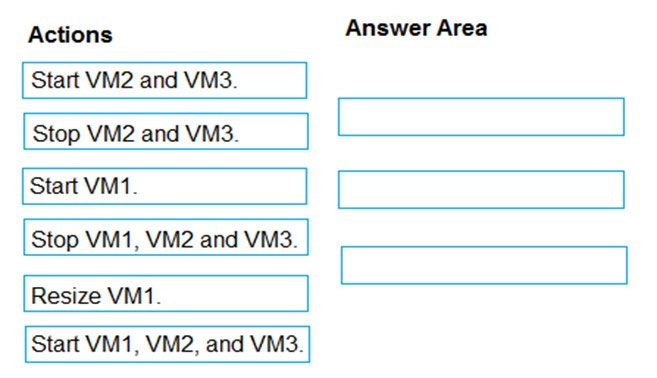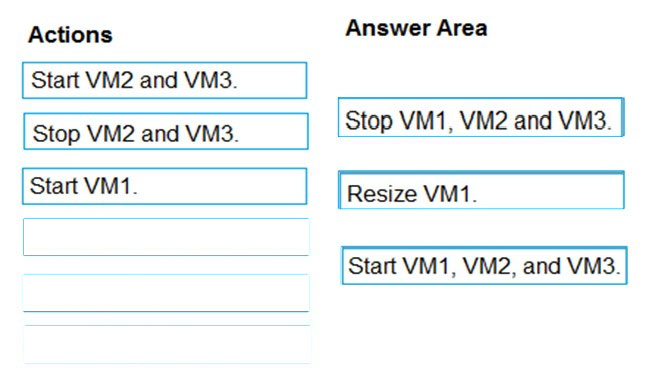
Expert Verified, Online, Free.

DRAG DROP -
You have an availability set named AS1 that contains three virtual machines named VM1, VM2, and VM3.
You attempt to reconfigure VM1 to use a larger size. The operation fails and you receive an allocation failure message.
You need to ensure that the resize operation succeeds.
Which three actions should you perform in sequence? To answer, move the appropriate actions from the list of actions to the answer area and arrange them in the correct order.
Select and Place:

Cloudyuga
Highly Voted 3 years, 11 months agoHanuman
3 years, 9 months agopraveen97
3 years, 9 months agotashakori
Most Recent 1 month agoChang401
1 year, 6 months agovikram12345
3 years agosjccde
3 years, 5 months agoSrikanth_M
3 years, 7 months agojjkidd72
3 years, 8 months agoimnotabot
3 years, 8 months agoOkanda91
3 years, 8 months agosakthivelesec
3 years, 9 months agosakthivelesec
3 years, 9 months agomrcombo
3 years, 9 months agomrcombo
3 years, 9 months agosourabh7257
3 years, 10 months agoMike35
3 years, 9 months agosasaws
3 years, 9 months agoAniruddha_dravyakar
3 years agoQuanster
3 years, 10 months ago